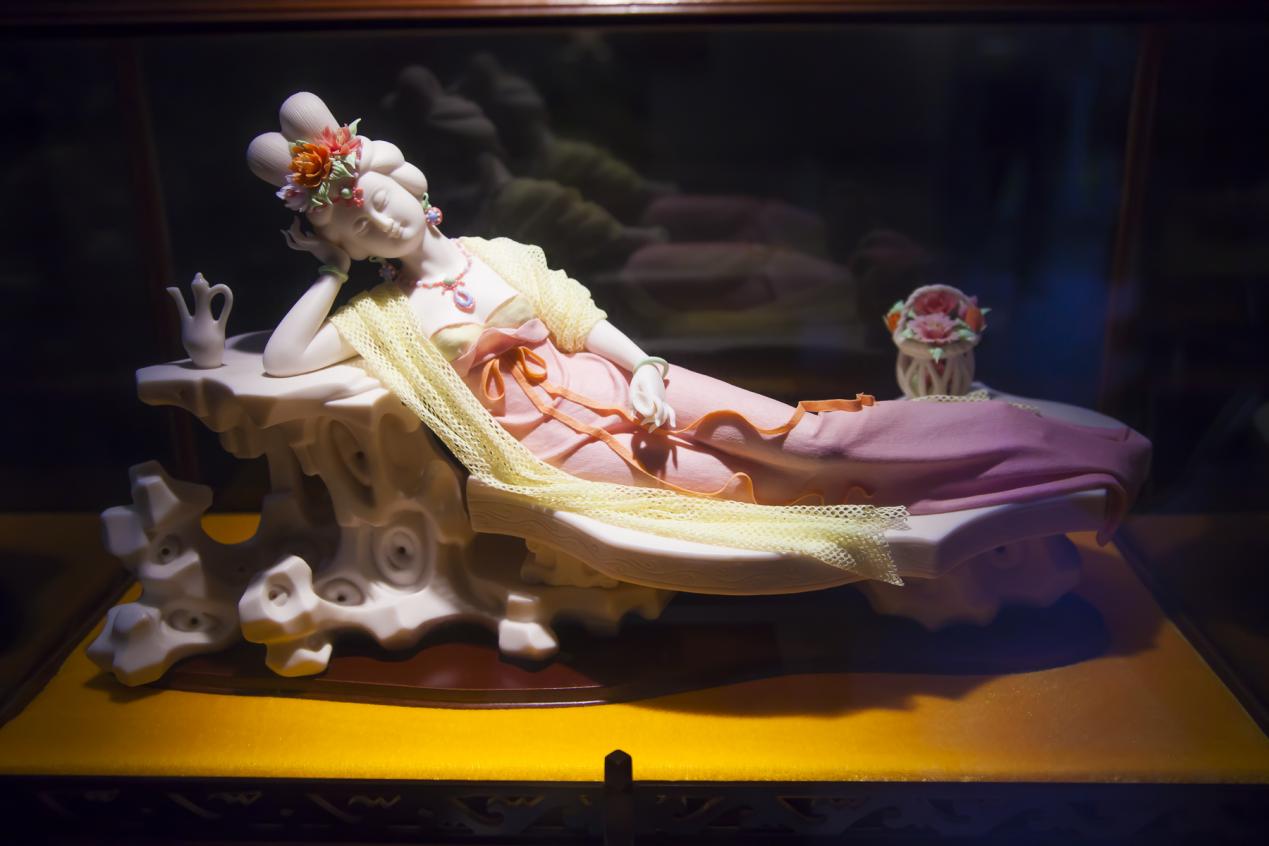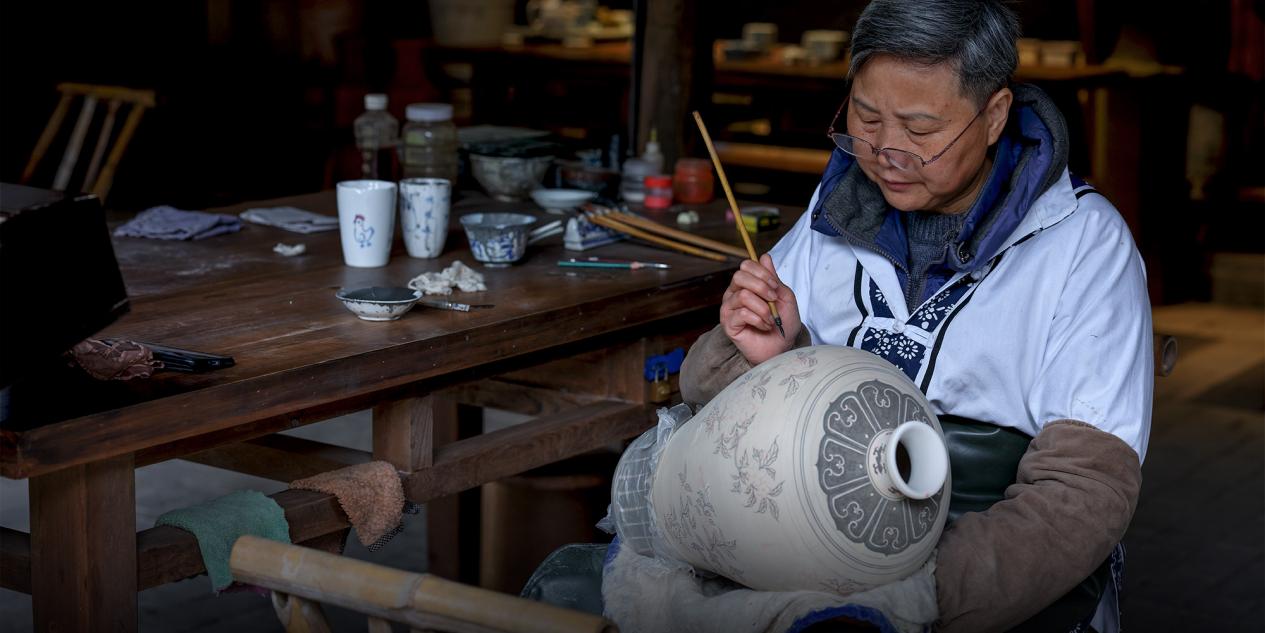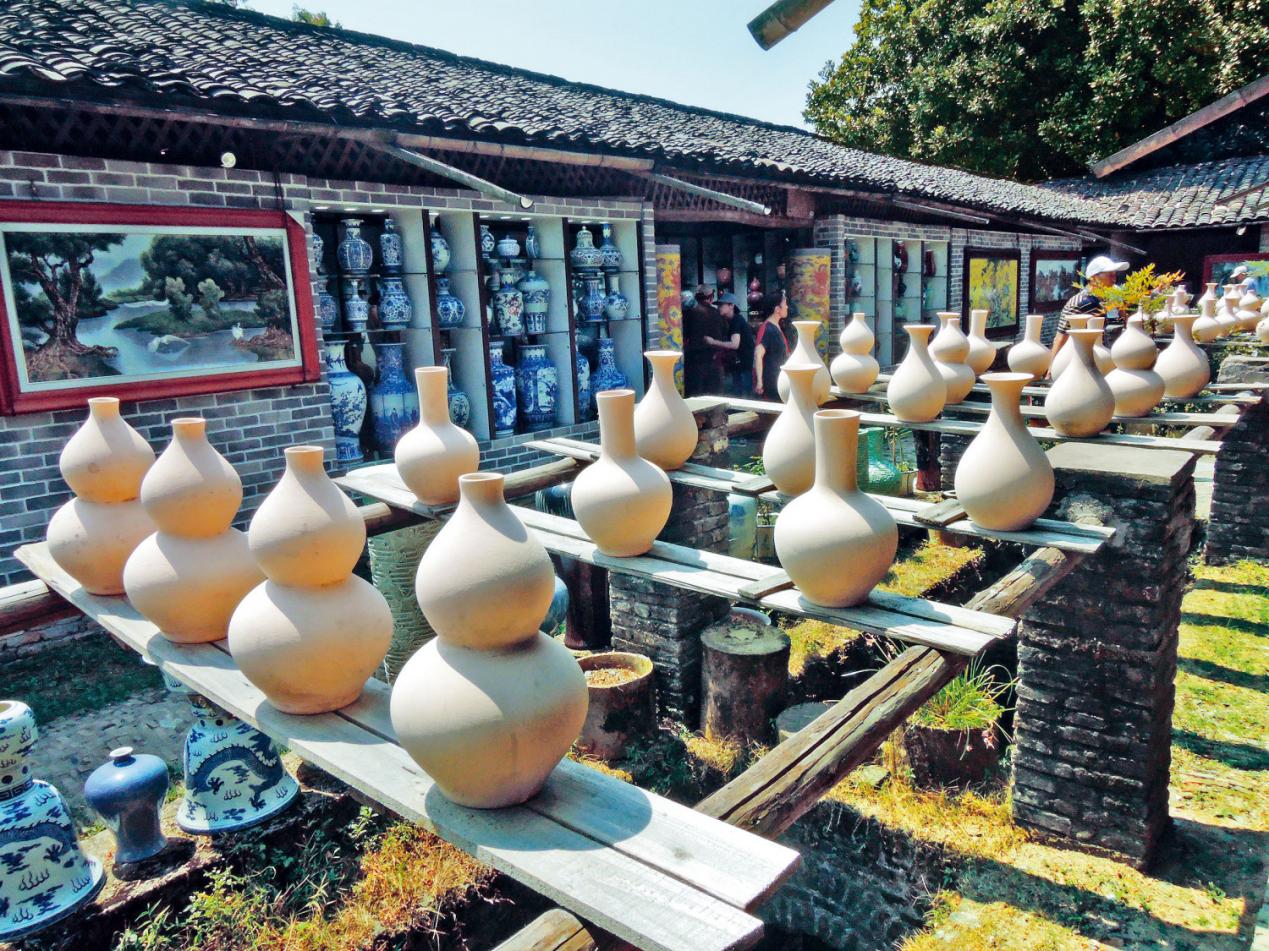

(By Chen Zhiying)In China, when we mention Jingdezhen, we always think of porcelains. Jingdezhen has been playing an important part in Chinese porcelain production for millennia, and its porcelain is the most famous type of Chinese porcelain. Serving as the veritable porcelain capital in China, even in the world, the town has already become a symbol of porcelain. As a saying goes “China is well known in the world for its porcelain, and Jingdezhen is the most well-known center, with the highest quality porcelain in China”. Let's walk into the world of porcelain and unveil the secrets hiding behind this man-made masterpiece.
Path to become a national highlight
It is said that Jingdezhen started to produce fine ware for official use as early as the 6th century and is known to have continued producing excellent ware during the Tang Dynasty (618–907). Its most productive period, however, began during the Song period and especially in the later Nan (Southern) Song period (after 1128), when many porcelain workers from the north arrived in the city as refugees from the Jin invasion. In the late 12th century, great quantities of porcelain were exported from the area. Under the Ming Dynasty (1368–1644), Jingdezhen began producing high-quality ware on a vast scale for the imperial household and the government in general. Througho ut the Ming period, Jingdezhen, rather than an imperial factory, was the centre of procurement on behalf of the government. The porcelain industry flourished during this period, producing wares of superlative quality.

Because of the wars at the end of the Ming Dynasty, Jingdezhen porcelain at the beginning of the Qing Dynasty showed signs of decline. But after 1680, porcelain production not only revived, but also started to make progress. Thanks to the hard work of the potters and craftsmen, porcelain wares made in Jingdezhen reached its peak during the period of Kangxi, Yongzheng, and Qianlong of Qing Dynasty. A French Jesuit monk reported that there were over 3,000 kilns in Jingdezhen at the time. Jingdezhen porcelain in Qing Dynasty had inherited the craftsmanship and variety of Ming Dynasty, but there were many inventions. For example, the blue and white at Kangxi period utilized gem blue, much purer and brighter than that of the Ming Dynasty. These were the finest porcelains ever made. And what is more, many new glazes were invented at the time. In addition, during the reign of Kangxi emperor, Jingdezhen resumed the production of copper red glaze, which had almost been lost since the Ming Dynasty. In the Qing period, combined folk and Imperial styles, designs became more varied. Jingdezhen ware became famous around the world.
Porcelain is the creative fruit of the working people of ancient China. Since ancient times, it has been exported worldwide, which promotes economic and cultural exchange between China and the outside world, and profoundly influences the traditional culture and lifestyle of people from other countries.
Fascinating art works with intricate procedures
Behind these fascinating art works involve complex procedures and craftsmen’s painstaking efforts. Usually, local deposits of petunse and kaolin make up the raw materials. After gaining suitable raw materials, craftsmen use hammers pulverize the mined stone into a fine powder. Once powdered, the minerals are mixed together with water. Finally, the mixture is dried into workable clay. The refined clay must then be formed into the desired pottery. This can be particularly tricky, as porcelain is difficult to work with. Low plasticity makes it prone to cracking during the crafting process. The moisture of the clay must be carefully maintained to keep the clay workable, yet sturdy. Today, some clay in Jingdezhen contains processed cellulose, like that found in paper, since the fibrous material helps to increase the strength in the clay during the forming process. In Jingdezhen, centuries of production have streamlined the crafting process. Artists in Jingdezhen are specialists, each controlling a specific stage of production. Some in the city even specialize in transporting unfinished work from one artist to the next. This is a difficult job, as the pieces are at their most fragile state before firing.

Most porcelains produced in Jingdezhen is painted with intricate designs. Nature or dragon motifs are craftsmen’s top choices. Experienced artists of proven skill are often selected to paint the decoration. The different color materials have to be properly combined. The artist first paints the white porcelain, which is then fired in the kiln to test the properties of the colors and the length of firing they require. The famous blue and white porcelain of the Ming Dynasty has become one of the most popular styles. Today’s artists replicate these wares with great precision. Using cobalt oxides, they paint designs by hand onto the white clay. Finally, the finished piece goes into the kiln. The firing must get hot enough for the clay particles to crystallize and harden. This process turns a brittle piece of mud into a durable piece of pottery. The porcelain clay from Jingdezhen consists of fine, dense particles. When fired to suitable temperatures, the clay vitrifies and becomes glass-like. This makes Jingdezhen porcelain surprisingly durable, despite its delicate appearance.

Jingdezhen porcelain is characterized by its beautiful shapes, various varieties, rich decorations, and unique styles. It is quite famous for its white porcelain, which is known for being “white as jade, bright as a mirror, thin as paper, and sounding like a bell”. What’s more, its production techniques have been listed in the first batch of the intangible cultural heritage. A tour to Jingdezhen will not only let you learn about the history and culture about porcelain, but also provide an opportunity for you to experience how exquisite porcelain is made in traditional ways.
Source: China-ASEAN Panorama
桂ICP备14000177号 Copyright@2006-2013 Guangxi China-ASEAN Panorama Magazine Agency Co., Ltd. All Rights Reserved